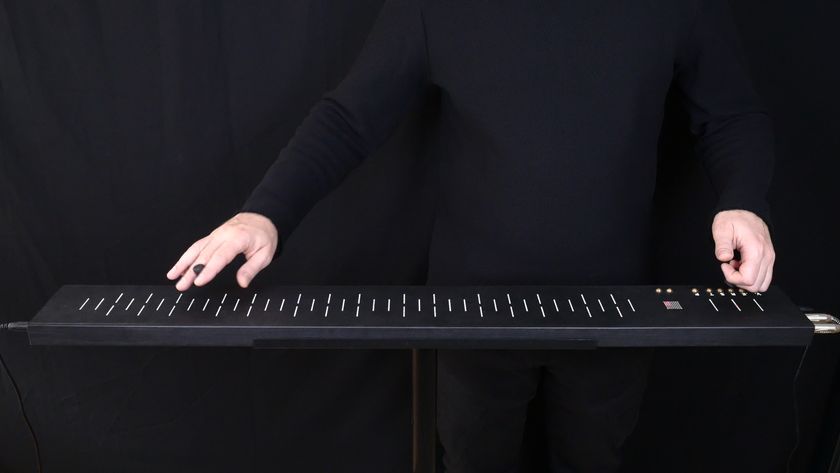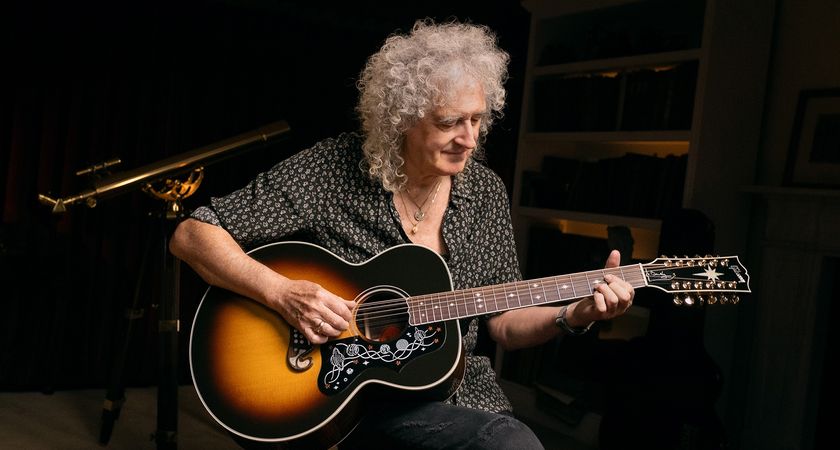MusicRadar Verdict
Very usable monitors that create an impressive sound, despite the limited dimensions.
Pros
- +
Compact – ideal for home studios. Bi-amped. Can be expanded with subwoofer/further 8020s.
Cons
- -
Sound is a bit too harsh at times. Little direction in low frequencies. XLR-only inputs.
MusicRadar's got your back
If space is an issue, then Genelec's smallest active monitor could be right up your street.
Sporting the same design and styling as the rest of their 8000 series, these surprisingly compact little monitors clearly aim to replace those nasty speakers that come bundled with your computer.
But at nearly £500 these are serious monitors too, ideal for computer music users who may find traditional 'near-field' monitors a bit large when they're 18 inches from their nose.
Hands on
Clearly the 8020s aren't designed to replace mid-field or main monitors. However, the Genelec's Minimum Diffraction Enclosure (MDE) design produces plenty of useful low frequency, even in a small unit.
Thankfully although they're just 20 watts and just over nine inches tall, they're still bi-amped with the same array of tone control dipswitches round the back.
The fact that these speakers are so compact it's also no surprise to see a number of mounting holes (brackets included) in addition to the rubber Iso-Pod desktop stand.
If you were to couple the 8020's with a decent subwoofer, they would surely make a suitably unobtrusive surround set-up.
As you'll see the integrated Iso-Pod is ideal for console bridge or stand mounting, and allows a degree of tilting.
There are four dipswitches on the back that control treble tilt, bass tilt and bass roll-off (for use with a subwoofer).
Input connections are XLR-only, which is a shame, but you'll find an XLR output/thru for daisy- chaining other 8020s.
Once plugged in to the mains, the monitors are in standby mode and turning the front-panel volume control clockwise switches them on.
In use
Genelec's suggested tone settings for near-field use are no treble tilt and -4dB bass tilt.
This would explain why straight out of the box I'm left wondering why there seems to be too much low frequency kicking around.
In this 'flat' state the 8020s give the impression of being hyped in both the high and low frequencies.
As a starting point, we trim 2dB off the treble and bass. Over time this proves to be the most suitable setting for our ears.
However, overall you do notice that the low frequencies, although audible, are not particularly directional.
This has to be a symptom of generating low frequencies with a small driver (four inches) and a bass reflex port.
And at times the 8020s make everything sound just a little bit too good. Although, to be fair, referencing a load of music helps overcome that hurdle.
Conclusion
There's a trend towards smaller, less intrusive home music systems at the moment, so it makes sense to consider similar systems for use in the studio.
In that context the 8020s offer a high-quality solution for a reasonable price.
Future Music is the number one magazine for today's producers. Packed with technique and technology we'll help you make great new music. All-access artist interviews, in-depth gear reviews, essential production tutorials and much more. Every marvellous monthly edition features reliable reviews of the latest and greatest hardware and software technology and techniques, unparalleled advice, in-depth interviews, sensational free samples and so much more to improve the experience and outcome of your music-making.

“I want to continue to have something that’s not microwavable in a world today where our attention span is pretty much lost”: Kendrick Lamar officially becomes the world's biggest hip-hop artist

"It's a theremin on steroids": Soma Laboratory's Flux brings the theremin into the 21st century with sixteen dimensions of control over a supercharged synthesizer

“Gibson was able to put the universe on it… the planet Mercury is here, and that is a little nod to a friend of mine”: Inspired by the stars and co-designed by the Queen guitarist, Gibson unveils exquisite Brian May SJ-200 12-String
Most Popular







